Period of Contemporary Art
The stylistically varied art of the past few decades is one of the fastest growing areas in the Biggs permanent collection. Delaware’s contemporary art scene is fueled by local centers of art education such as the University of Delaware, the Pennsylvania Academy of the Arts, Delaware College of Art and Design, Tyler School of Art, and several important art leagues. Realism remains the dominant force in local visual art circles and traditional art forms such as furniture and glass blowing are preserved by modern artists across the state. For more information on recent figures on the Delaware art scene, check out the Biggs’ Past Exhibitions.
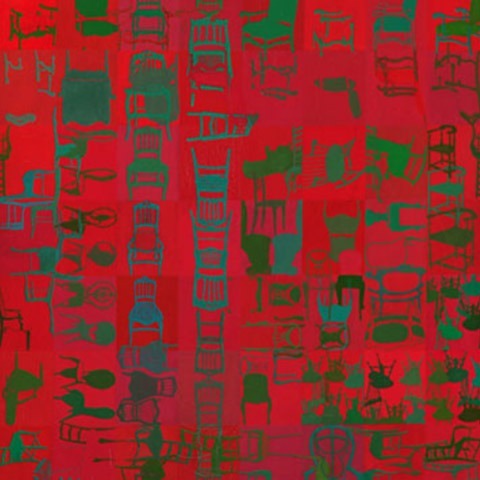

Myrna Bloom studied fine art at Tyler School of Art and aesthetics at the Barnes Foundation in Philadelphia. She began experimenting with op art (short for optical art, a style of abstract art that uses optical illusions) and naturalistic compositions that emphasized color relationships, the forms of domestic objects, and smoothly painted surfaces. In later years, Bloom also created abstract sculptures with expressive movement. She has exhibited in a wide variety of solo and group exhibitions regionally and nationally. Bloom’s work has been purchased by Temple University, the Pennsylvania Council of the Arts, and for several corporate and private collections.
CHAIRS I
MYRNA BLOOM (1939-)
1970
OIL ON CANVAS
GIFT OF THE ARTIST, 2005.2
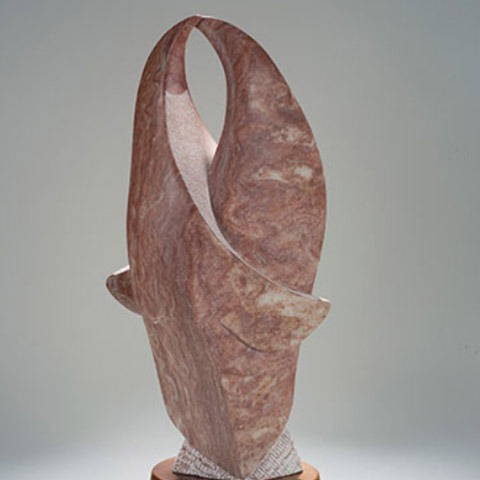
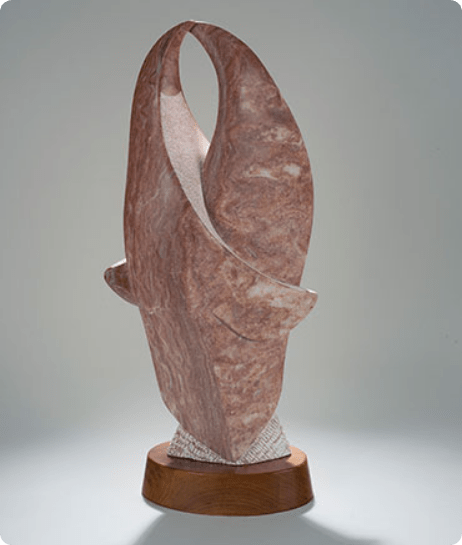
Charles Allmond, a lifelong resident of Wilmington, Delaware, is best known as a uniquely successful abstract artist in the competitive field of highly naturalistic wildlife art. Sculpting since 1982, Allmond’s work is carved directly from stone and wood with additional series cast in bronze. With degrees in agronomy and law, this self-taught artist was encouraged to sculpt by the many artists and collectors of the Wilmington art scene and became the former president of The Society of Animal Artists. Allmond’s work has been exhibited in venues across the United States, Canada and Sweden and can be found in the collections of the University of Delaware, Hiram Blauvelt Art Museum, the Leigh Yawley Woodson Art Museum, and St. Hubert’s Giralda Museum of Animal Art.
REUNION (4/8)
CHARLES ALLMOND (1931–2019)
1993
BRONZE
MUSEUM PURCHASE; 2004.503

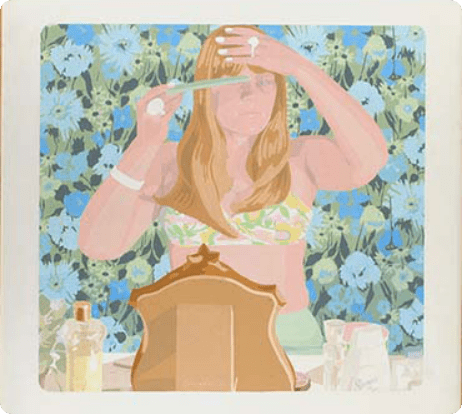
Joseph Konopka demonstrates pop artists’ veneration of advertising and ordinary objects to the level of fine art. In this portrait of his wife, he emphasizes wallpaper patterns and the arrangement of beauty products on the vanity. Born in Philadelphia and a student of the Cooper Union and Columbia University, Konopka painted his large compositions from studying a series of photographs of his subject. The artist is represented in dozens of U.S. and European art museums, including the Smithsonian American Art Museum, the Museum of the City of New York, the Newark Museum of Art, and the National Museum in Warsaw, Poland.
HAIR
JOSEPH KONOPKA (1932–2013)
1970
ACRYLIC ON CANVAS
GIFT OF CASIMERA KONOPKA: 2004.505


Jan Zandhuis studied science at Leyden University in the Netherlands, which later served the artist’s glass blowing instruction at Carnegie Mellon University, the Rhode Island School of Design, the Rochester Institute of Technology, the Royal College of Art, and the Gerrit Rietveld Academy, from 1959-1975. In the emerging American Studio Glass Movement of the late 1950s and 1960s, Zandhuis’s work displayed mastery in an array of glass techniques, including molding, blowing, lampworking (small-scale work done with a torch instead of a blowpipe or tube), “cold connections” or gluing, and “slip trailing” streams of liquid glass to dry as applied decoration. The artist’s work is in the collection of the Carnegie Museum of Art, the Corning Museum of Glass, and the National Gallery of Australia.
VIKING GOBLET
JAN PETER ZANDHUIS (1937–2020)
CA. 1970
BLOWN GLASS
GIFT OF THE ARTIST; 2007.6.9

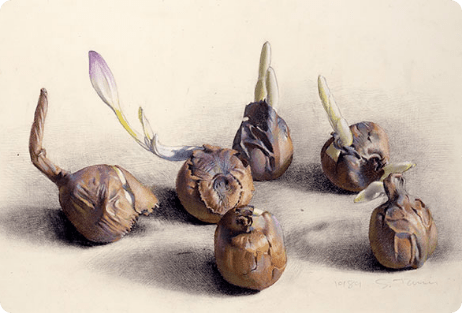
Steve Tanis studied art at the University of Cincinnati and the Cranbrook Academy of Art before launching a nearly forty-year career teaching at the Department of Art at the University of Delaware. Now professor emeritus, the artist has been featured in group and solo exhibitions throughout the United States and Europe, and is represented in over thirty corporate and museum collections. Bulbs may have been purchased from a show of the artist’s work exhibited in The Grand Gallery, a commercial art gallery run by the Biggs Museum’s founder Sewell C. Biggs.
BULBS
STEVE TANIS (1945–)
1989
PASTEL, CHARCOAL, AND GRAPHITE ON PAPER L269

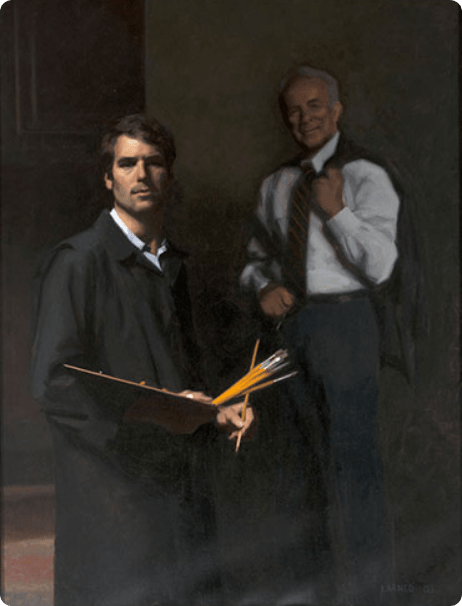
Through a chance meeting, David Larned was nurtured by Biggs Museum founder Sewell C. Biggs early in his artistic career. Larned studied at the Pennsylvania Academy of the Fine Arts and the Florence Academy of Art before settling in Northern Delaware and Southeast Pennsylvania as a painter of portraits, landscapes and still life. The Biggs Museum purchased Self Portrait as Portrait Painter from the artist’s first museum exhibition, fulfilling the founder’s wish to see Larned’s work within this institution. Since this purchase, the artist has painted several official portraits of Delaware politicians, business leaders and other local patrons.
SELF PORTRAIT AS PORTRAIT PAINTER
DAVID LARNED (1976–)
2003
OIL ON CANVAS
MUSEUM PURCHASE; 2004.50


A resident of Dagsboro, Delaware, Tom Frey began turning wood on a lathe in 1987. Largely self-taught, this craftsman specializes in turning exceptionally thin, “natural-edge” vessels such as Turned Bowl. Frey sources the majority of his wood locally and sells his work regionally through juried competitions and craft fairs. Several years ago, the artist also began turning miniature vessels, a specialized community within the wood turning community. The artist is an early member of the Biggs Museum’s Delaware By Hand artist membership and is a founding member of the Southeastern Delaware Artist Studio Tour.
TURNED BOWL
TOM FREY (1937–)
2005
BIG-LEAF MAPLE BURL
GIFT OF THE ARTIST; 2005.39.
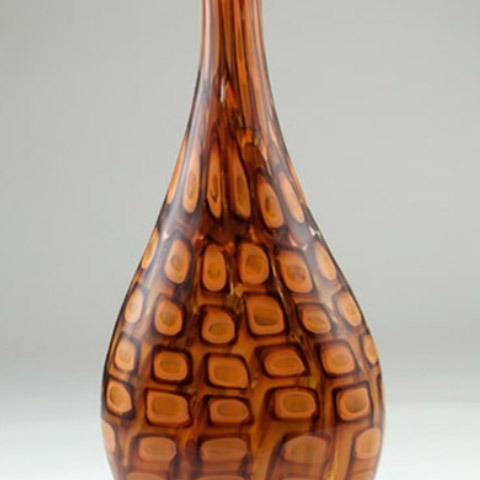

A native of New Castle, Delaware, Deb Appleby studied glass blowing at the Penland School of Craft, the Pilchuck Glass School, and the Haystack School of Glass before working in studios in Europe. Settling in Lewes, Delaware, the artisan ran the Studio on 24, creating vessels and architectural installations in blown glass. The Big Girl’s Sister Irene demonstrates Appleby’s adaptation of the laborious Italian “murrine” glass technique in which layered rods of colored glass are crosscut, fused into a flat sheet and shaped into a functional vessel.
THE BIG GIRL’S SISTER IRENE
DEB APPLEBY (1961-)
2006
GLASS
GIFT OF DR. RICHARD APPLEBY III; 2006.24


A 2010 recipient of the Hassam, Speicher, Betts & Symons Purchase Fund Award for the American Academy of Arts and Letters, Mary Putman began her career studying art at Carnegie Mellon University. Having lived in Philadelphia for many years, the artist gravitated to the open landscape of Delaware, which brought back memories of her childhood home in rural southern Michigan. The work of this acclaimed artist illustrates the forms and patterns of human encroachment upon the land. A Map of the World is an aerial view into the artist’s representation of the small, traditional fishing village of Leipsic, Delaware, near the state’s capital of Dover and the Delaware River
A MAP OF THE WORLD
MARY TOBIAS PUTMAN (B 1943)
2006
OIL ON PANEL
MUSEUM PURCHASE, 2010.7


Chad States studied at the Tyler School of Art in Philadelphia. He has taught photography at Moore College of Art, and was an active member of Vox Populi, an art collective based in Philadelphia, 2013-2018. In addition to the Biggs, the artist’s work has been exhibited at ClampArt, the Randall Scott Gallery, FLUXSPACE, and the Delaware Center for the Contemporary Arts. His 2011 publication Cruising was short listed as one of the best new photobooks in 2012 by Aperture Foundation and Paris Photo. His work focuses on issues of Queer male identity and sexuality.
UNTITLED (FROM THE CRUISING SERIES)
CHAD STATES (1975–)
2012 (PRINTED)
ARCHIVAL PIGMENT PRINT
MUSEUM PURCHASE; 2012.10


Silversmith Michael Izrael Galmer immigrated to the United States from the former Soviet Union in 1981. He was originally educated in engineering, physics and chemistry, which perhaps aided his experimentation in metalworking techniques. After creating designs for top American silver retailers, such as Gorham and Tiffany, and developing his extensive lines of luxury home goods and jewelry, Galmer has transitioned to sculptural works of silver. Many feature triumphal narratives over adversity, which he identifies with through his Jewish ancestry. His work is in collections such as Cooper Hewitt, Smithsonian Design Museum and the Holocaust Memorial and Tolerance Center in New York.

